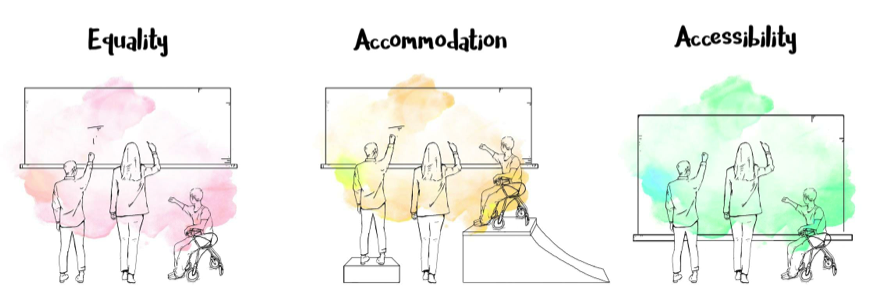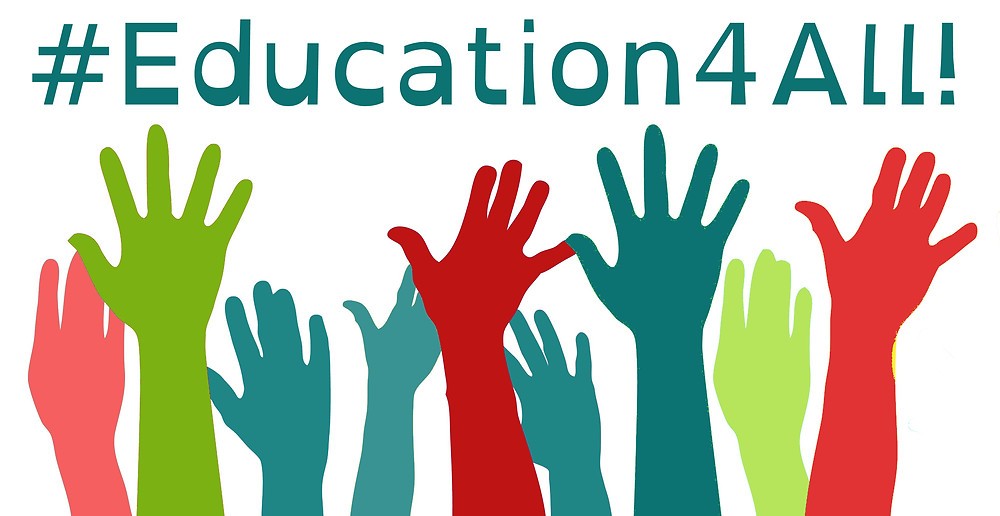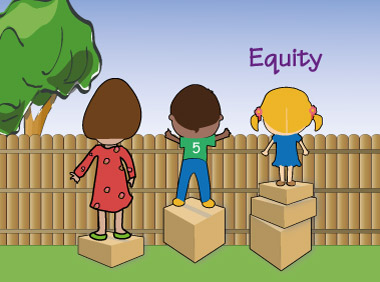Equity and Accessibility in online learning-An Inclusive Approach
We had an excellent discussion this week about accessibility and how it relates to online courses. I’ve gotten acquainted with accessibility in recent years and felt fairly confident in my comprehension prior to our seminar. However, the farther we got into the topic, the more I realized how broad the term accessibility can be, and how limited my existing perspective was!

. In recent years, education has seen a transformational move towards online and mixed learning methods, providing students in Saskatchewan schools with unparalleled opportunities. However, as technology has advanced, the issue of guaranteeing course accessibility and equity has grown even more vital. In this blog article, we look at the notions of course accessibility and equity in the context of online and blended learning, and how these principles can help all students in Saskatchewan have an inclusive and empowering educational experience.

An Inclusive Approach to Equity in Online and Blended Learning-
Achieving equity in online and blended learning entails ensuring that all students, regardless of their backgrounds, financial status, or geographic location, have equitable access to high-quality education and assistance. Schools should prioritize strategically allocating resources to assist students who may have disadvantages or issues in getting essential technology and internet connectivity. Identifying students who need extra help and delivering personalized interventions can help bridge learning gaps and guarantee that every student has a chance to succeed. Incorporating varied viewpoints and experiences into school policies and curricula develops a sense of belonging and representation among all students: Continuous professional development can help educators better understand and handle the particular needs of their pupils. To achieve course accessibility and equity, multiple parties, including teachers, administrators, students, and parents, must work together. Involving parents and careers in the learning process helps to build a supportive network and improves student results. Using data to identify gaps and track progress can help with intervention design and achieving equitable results for all students. Involving local communities and organizations can give kids facing socioeconomic issues with significant resources and support.
As Saskatchewan schools adopt online and hybrid learning, course accessibility and equity must be prioritized to guarantee that all students receive an inclusive and empowered education. Educators can create an atmosphere where every learner can thrive and succeed, regardless of their specific circumstances, by applying inclusive design, mindfully integrating technology, and creating collaborative partnerships.

Let us work together to create a better future in which education leaves no one behind and allows every student to fulfil their full potential.
Thank you for the post Suruchi! You have made some great points about designing and creating an inclusive learning environment for students. I appreciate your comments about creating collaborative partnerships. As teachers, I think we sometimes feel and even think that much of student learning lands at our feet. But developing those collaborative partnerships – in the physical classroom and in the online learning environment – are extremely important and valuable. From Professional Learning Communities (in person and online) to IT support, these partnerships are necessary for student and teacher success. The online and blended learning world of teaching is still very new for many of us, despite our online time during Covid. At that point, many of us were simply thrown into this world with little experience and knowledge of how to do it well. We are still wading deeper into these waters with our students and families and learning as we go.
Nice post! It clearly outlines how important it is for us to ensure we are making learning accessible for all to have an equitable learning experience. How do you think we can influence other teachers/facilitators to create accessible/equitable classrooms? What is required of us?
Thanks for your response!! well to persuade other teachers and facilitators to establish accessible and equitable classrooms, we must set a positive example and foster an inclusive culture within our educational community. To begin, we should educate ourselves about various learning needs and accessible practices, remaining current with the most recent research and resources. We may demonstrate the success of these ideas and argue for their wider acceptance by incorporating them into our own teaching methods and classroom design. It is critical to participate in open discussions, workshops, and training sessions with other educators, sharing successes and concerns. Encouragement of empathy and understanding among instructors contributes to a shared commitment to building an inclusive atmosphere. Collaboration with school officials is also required to create policies that promote accessible and equitable practices .Finally, we can motivate our peers to embrace accessibility and equity in their classrooms by being aggressive advocates, role models, and cultivating a supportive community.
This paper emphasizes the crucial significance of fairness and accessibility in online learning, making it an insightful and important read. The post gains a personal touch from the author’s open discussion of how their view of accessibility has changed. It is laudable that the accessibility of the course was thoroughly explained, along with its relationship to inclusive design and Universal Design for Learning (UDL) principles. The focus on attaining equity through thoughtful resource allocation and incorporating a range of stakeholders in the learning process is also incredibly motivating. This piece is a potent call to action, reminding us all of the need of providing every student with an inclusive and empowering educational experience. Good work!